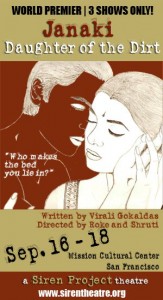In the early morning hours of September 10th, the Desi community of D.C. was rocked when a local aeronautical engineer and theatermaker Gaurav Gopalan was found near death only two blocks away from his home. He died soon after. He was only 35. There had been confusion over if had been a hate crime (he was wearing women clothing at the time as an alter persona named “Gigi”) but there had been no visible signs of trauma. Today it was confirmed to be a homicide.
Gopalan, who was found unconscious near his Columbia Heights home in the early hours of Sept. 10, died after suffering sub-arachnoid hemorrhage—bleeding in the space between the brain and the thin tissues that cover it—”due to blunt-impact head trauma,” according to Beverly Fields, chief of staff of the D.C. Office of the Chief Medical Examiner. “The manner of death is homicide.” … The news comes in the wake of initial confusion about the case, and amid a string of shootings involving transgender women in the District. (Gopalan was wearing women’s clothes when he was found by a passerby on the 2600 block of 11th Street NW.) [citypaper]
Losing someone suddenly is tragic but for it to be a potential hate crime just highlights the incredible injustices in this world. Khush DC sent out a release this week:
This tragedy comes during an especially troubling time for Washington D.C.’s LGBTQQIA community. A number of incidents involving sexual and gender minority individuals, particularly those affiliated with the transgender community, have occurred during recent months. We stand in solidarity with all of our communities at this time, and ask everyone to exercise personal safety measures. We also urge the MPD to fully and thoroughly investigate the incidents that have occurred. [khushdc]






